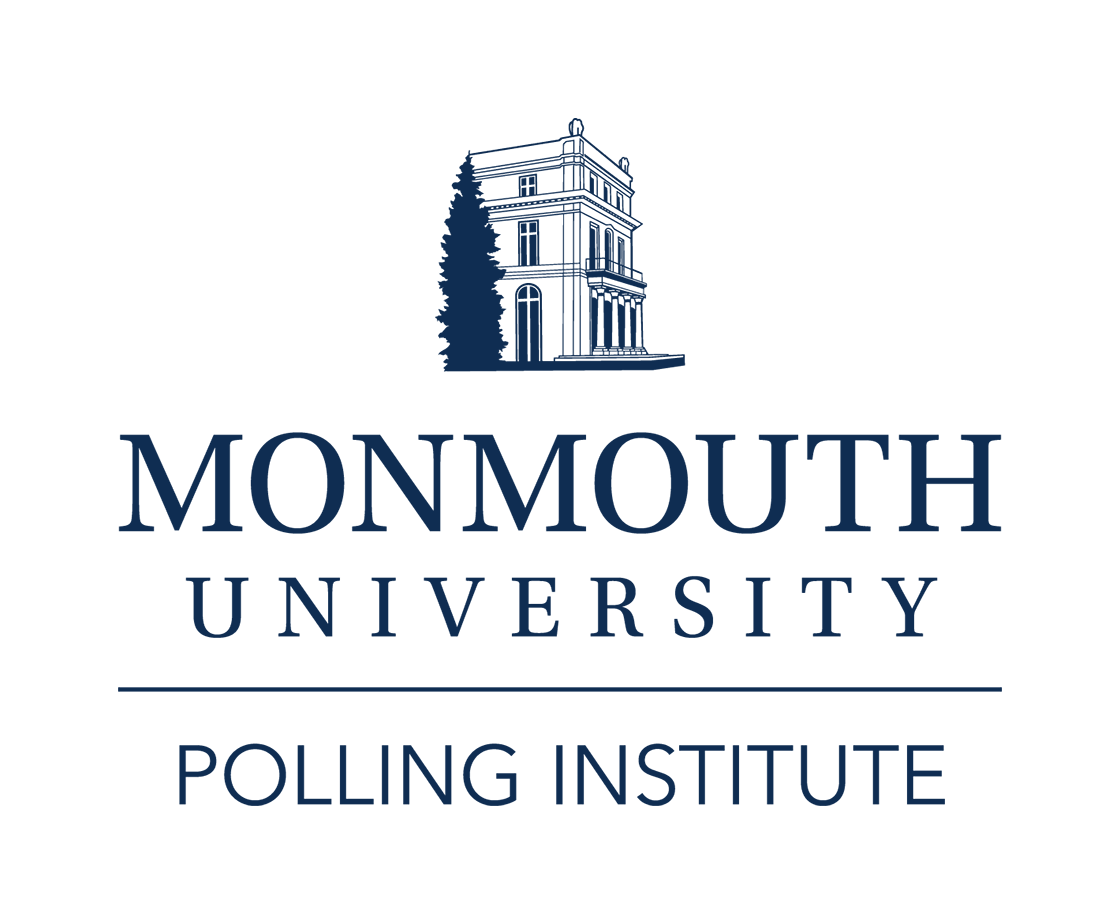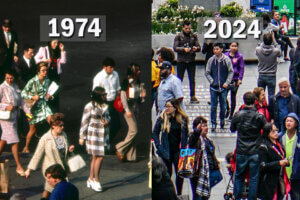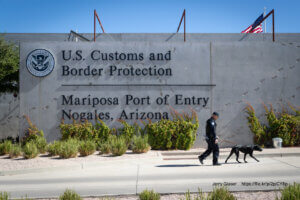West Long Branch, N.J. – This week marks the 53rd anniversary of John Glenn’s first manned orbital space flight. The Monmouth University Poll finds that most Americans feel the nation’s 1960s space program gave us long-lasting benefits and many say increased spending on the space program today would be a good investment. However, less than half the public supports spending billions of dollars specifically to send astronauts back to the moon or to other planets – a program that is currently in the works at NASA. Interestingly, this reluctance is similar to the public mood in the 1960s. A majority of Americans do support private space exploration, though.
A majority (56%) of Americans feel that the money and effort spent on the country’s quest to land an astronaut on the moon in the 1960s left society with long-lasting benefits. Another 34% feel those benefits were short-lived. Young adults age 18 to 34 (60%) are somewhat more likely than older Americans age 55 and over (51%) – i.e. those old enough to remember NASA’s early space flights – to feel that the program had long-lasting benefits. Fifty-five percent of those age 35 to 54 feel the same.
A bare majority (51%) of the country feels that increased spending on the space program today would be a good investment, while 43% think it would not. Similar numbers of Democrats (54%), Republicans (51%) and independents (51%) see benefits in increased spending on space exploration. Men (57%) are more likely than women (45%) to see this as a good investment.
NASA launched the initial test spaceship for its new Orion program two months ago. This is designed to be the first step toward long-range human exploration of space including potential inter-planetary travel. Just over 4-in-10 (42%) Americans are in favor of the U.S. government spending billions of dollars to send astronauts to places like the moon, Mars, and asteroids, while half (50%) oppose such an expenditure. There are no partisan differences in this opinion, although men (50%) are more supportive than women (36%) of funding this new program.
“Half a century after NASA’s heyday, America is still fascinated by the prospects of space exploration, but balk at the price tag. However, they opposed the space program’s cost in the 1960s as well,” said Patrick Murray, director of the independent Monmouth University Polling Institute in West Long Branch, N.J.
A Harris Survey taken in July 1967 – two years before the successful Apollo 11 moon landing – found that only 34% of the public felt that the space program was worth its annual $4 billion price tag at the time while 54% said it wasn’t worth it. Also, the same 1967 poll found the public to be divided – 43% in favor to 46% opposed – over NASA’s drive to land an astronaut on the moon.
The future of space travel may now lie in private ventures, which most Americans do support. A number of entrepreneurs have already begun to sell seats on private space flights, although those efforts have been set back by the crash of a Virgin Galactic test run last October. Still, nearly 6-in-10 (58%) Americans say that private companies and individuals should be able to build their own rockets to take people into space. Another 37% feel that space travel should be restricted to national governments.
Just under half of the public believes that ordinary people traveling regularly into space is very (13%) or somewhat likely (31%) in the next twenty or thirty years. Most think regular passenger flights to space are either not too (28%) or not at all (27%) likely in the next few decades. It is worth noting that public opinion has not been a very good prognosticator of the pace of space exploration in the past. A Gallup Poll taken in 1954 found that just 38% of the public believed that “men in rockets will be able to reach the moon” by the end of the 20th century. When Gallup asked in 1965 whether a moon landing would occur within twenty years, 59% said yes but 31% said no – just four years before the feat was actually accomplished.
Just over 1-in-4 (28%) Americans in the current Monmouth University Poll say they would like to take a free trip on a private spaceship if it was offered to them, including 38% of men and 17% of women. This is slightly higher than the number of people who felt brave enough to attempt a space flight in the early days of the space program. A Gallup Poll taken in 1966 found that 17% of Americans were interested in hitching a ride on the first moon shot, while 80% said they would give it a pass.
The Monmouth University Poll was conducted by telephone from December 10 to 14, 2014 with 1,008 adults in the United States. This sample has a margin of error of ± 3.1 percent. The poll was conducted by the Monmouth University Polling Institute in West Long Branch, New Jersey.
DATA TABLES
The questions referred to in this release are as follows:
(* Some columns may not add to 100% due to rounding.)
1. In the 1960s, the United States space program spent a great deal of money and effort to land on the moon. Looking back now, do you think that effort has left society with long-lasting benefits or were the benefits short-lived?
|
TOTAL |
PARTY ID | GENDER |
AGE | ||||||
|
Rep | Ind | Dem | Male | Female | 18-34 | 35-54 |
55+ | ||
| Long-lasting benefits | 56% | 60% | 56% | 53% | 60% | 52% | 60% | 55% | 51% |
| Benefits short-lived | 34% | 30% | 35% | 39% | 33% | 36% | 30% | 34% | 39% |
| (VOL) Mixed/Both | 2% | 3% | 1% | 2% | 1% | 3% | 4% | 0% | 3% |
| (VOL) Don’t know | 8% | 7% | 7% | 6% | 6% | 10% | 7% | 10% | 7% |
2. Do you think increasing spending on the space program today would be a good investment for this country or don’t you think so?
|
TOTAL |
PARTY ID | GENDER |
AGE | ||||||
|
Rep | Ind | Dem | Male | Female | 18-34 | 35-54 |
55+ | ||
| Would be a good investment | 51% | 51% | 51% | 54% | 57% | 45% | 50% | 51% | 51% |
| Would not be a good investment | 43% | 43% | 43% | 41% | 38% | 48% | 45% | 43% | 42% |
| (VOL) Depends | 3% | 3% | 4% | 3% | 3% | 4% | 4% | 3% | 2% |
| (VOL) Don’t know | 3% | 3% | 2% | 3% | 2% | 4% | 1% | 2% | 5% |
3. Would you favor or oppose the U.S. government allocating billions of dollars to send astronauts to places like the moon, Mars, and asteroids?
|
TOTAL |
PARTY ID | GENDER |
AGE | ||||||
|
Rep | Ind | Dem | Male | Female | 18-34 | 35-54 |
55+ | ||
| Favor | 42% | 42% | 44% | 43% | 50% | 36% | 48% | 40% | 38% |
| Oppose | 50% | 51% | 49% | 51% | 44% | 56% | 47% | 52% | 53% |
| (VOL) Depends | 5% | 5% | 6% | 4% | 5% | 5% | 4% | 6% | 5% |
| (VOL) Don’t know | 2% | 2% | 2% | 2% | 1% | 3% | 1% | 2% | 4% |
4. How likely is it that ordinary people will be able to travel regularly to outer space in the next 20 or 30 years? Do you think this is very likely, somewhat likely, not too likely, or not at all likely?
|
TOTAL |
PARTY ID | GENDER |
AGE | ||||||
|
Rep | Ind | Dem | Male | Female | 18-34 | 35-54 |
55+ | ||
| Very likely | 13% | 12% | 14% | 12% | 15% | 10% | 9% | 17% | 12% |
| Somewhat likely | 31% | 34% | 32% | 27% | 28% | 33% | 32% | 28% | 33% |
| Not too likely | 28% | 28% | 28% | 30% | 29% | 28% | 35% | 24% | 26% |
| Not at all likely | 27% | 26% | 25% | 30% | 27% | 27% | 24% | 31% | 26% |
| (VOL) Don’t know | 1% | 1% | 0% | 1% | 1% | 1% | 1% | 0% | 2% |
5. Do you think private companies and individuals should be able to build their own rockets to take people into space or do you think space travel should be left to national governments only?
|
TOTAL |
PARTY ID | GENDER |
AGE | ||||||
|
Rep | Ind | Dem | Male | Female | 18-34 | 35-54 |
55+ | ||
| Private companies and individuals should be able to | 58% | 57% | 66% | 47% | 71% | 44% | 51% | 64% | 56% |
| Left to national governments only | 37% | 36% | 30% | 49% | 26% | 49% | 45% | 32% | 37% |
| (VOL) Depends | 1% | 2% | 1% | 1% | 2% | 1% | 1% | 1% | 2% |
| (VOL) Don’t know | 4% | 5% | 3% | 4% | 1% | 6% | 3% | 3% | 6% |
6. If you won a free trip on a private company’s rocket ship into space, would you take the trip, or not?
|
TOTAL |
PARTY ID | GENDER |
AGE | ||||||
|
Rep | Ind | Dem | Male | Female | 18-34 | 35-54 |
55+ | ||
| Would take trip | 28% | 22% | 35% | 22% | 38% | 17% | 38% | 25% | 20% |
| Would not take trip | 69% | 73% | 61% | 75% | 57% | 80% | 58% | 71% | 76% |
| (VOL) Depends | 3% | 5% | 3% | 2% | 4% | 2% | 3% | 3% | 3% |
| (VOL) Don’t know | 1% | 0% | 1% | 0% | 1% | 1% | 1% | 1% | 1% |
The Monmouth University Poll was sponsored and conducted by the Monmouth University Polling Institute from December 10 to 14, 2014 with a national random sample of 1,008 adults age 18 and older. This includes 677 contacted via live interviewer on a landline telephone and 331 contacted via live interviewer on a cell phone, in English. Monmouth is responsible for all aspects of the survey questionnaire design, data weighting and analysis. Final sample is weighted for region, age, education, gender and race based on US Census information. Data collection support provided by Braun Research (field) and SSI (RDD sample). For results based on this sample, one can say with 95% confidence that the error attributable to sampling has a maximum margin of plus or minus 3.1 percentage points (unadjusted for sample design). Sampling error can be larger for sub-groups (see table below). In addition to sampling error, one should bear in mind that question wording and practical difficulties in conducting surveys can introduce error or bias into the findings of opinion polls.
|
POLL DEMOGRAPHICS (weighted) | |||
| 27% Rep | 49% Male | 32% 18-34 |
66% White |
| 42% Ind | 51% Female | 36% 35-54 |
12% Black |
| 31% Dem | 32% 55+ |
15% Hispanic | |
|
7% Asian/Other | |||
Click on pdf file link below for full methodology and results by key demographic groups.




